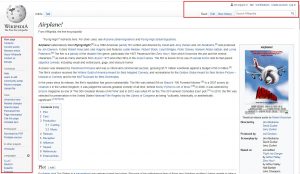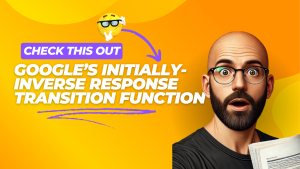We all know content should address your audience’s questions and concerns. But here’s the real opportunity:
What if you could systematically uncover buyer objections and turn them into SEO-optimized content clusters in minutes?
That’s exactly what this new GPT was built to do.
Whether you’re selling SaaS, services, physical products, or something in between, buyer hesitation is predictable, and powerful. If you can anticipate it, refine it, and respond to it at scale, you’ve just built a content strategy that sells and ranks.
If you want to skip ahead and just grab the GPT, here it is ==> Objection Builder GPT
Let me walk you through how this GPT works, and why it can be a game-changer for your content marketing.
The Idea
Back in April of 2023, I shared a note about using ChatGPT to generate objections for topic ideas. It was one of the first and biggest use cases I had for ChatGPT in my content marketing.
It allowed me to take a process that took me days, sometimes over a week, to complete and charge it up with the power of AI. I could get done the majority of it in an hour or less.
You can read that original note here: Using objections and ChatGPT to generate content ideas.
I also shared a video walking through the steps: https://www.youtube.com/watch?v=43GIPoYj7Oc&t=1s
It was a bit of a long process that involved working through 7 different prompts, but it ultimately generated a bunch of content ideas that could be used for stand alone pieces of content, new sections in existing content, or content for FAQs.
This GPT automates that process into an even more streamlined workflow.
What Are Buyer Objections and Why Should You Care?
A buyer objection is any reason someone might hesitate to buy, sign up, or take the next step.
They often sound like:
- “It’s too expensive.”
- “I’m not sure it integrates with what we use.”
- “What if support isn’t responsive?”
- “Is this really better than what I already have?”
These are the doubts, hesitations, or gaps in trust that stop people from converting.
And here’s the kicker:
They’re also the exact questions people are searching for.
That makes objections one of the best starting points for SEO content that converts.
The problem? Most teams guess at what objections might be, or never get beyond vague assumptions like “cost” or “time.” This GPT turns those guesses into specific concerns, and then turns those concerns into content.
🤖 What This GPT Does (And Why It’s Different)
This isn’t just a prompt that spits out blog post titles.
This is a 3-agent (cleverly named Agent A, Agent B, and Agent C) workflow designed to mimic how a great strategist thinks about objections, pain points, and SEO.
1. Agent A: The Objection Generator
Starts by reading your product or service description and creates 5–8 high-level objections (cost, security, integration, etc.). Think of it as a sales rep who’s heard every “but what about…” before.
2. Agent B: The Sub-Objection Refiner
For each broad objection, it generates 3–5 refined concerns. This is where the real insight emerges, turning vague resistance into real search-driven questions and hesitations.
3. Agent C: The Content Cluster Strategist
This is where SEO comes in. The agent groups related sub-objections into content clusters, and for each one provides:
- At least 5 article ideas
- 2–5 FAQ-style questions
The result: tightly focused, user-aligned, search-intent-driven content blueprints.
🔍 Why It Matters for SEO
This GPT connects what your buyers care about with what they’re searching for, and helps you build content that matches both.
Benefits include:
- Content strategy directly tied to buyer psychology
- Clusters organized by intent, not just keywords
- Fuel for bottom- and mid-funnel SEO (where most brands struggle)
- Ready-made outlines for blog posts, landing pages, or support docs
- Built-in FAQ content that maps beautifully to rich results
🛠 How to Use It
Just input a brief description of your product or service.
The GPT:
- Identifies objections
- Refines them into real concerns
- Maps them to content clusters + FAQs
No handholding, no stopping between stages. It runs the full process in a single flow.
But you don’t have to stop there. You can then ask it to refine any of the top-level or refined objections even further.
📬 Try It. Then Use It Everywhere.
You can use this GPT to:
- Build your next blog editorial calendar
- Plan a content-driven nurture campaign
- Update sales enablement docs and landing pages
- Spot holes in your existing content strategy
- Create support FAQs based on real search behavior
In short, it’s not just for writers. It’s for SEOs, marketers, sales pros, and founders who want to turn hesitation into helpfulness, and helpfulness into traffic.
I recommend using GPT 4.5, but it will work well with any of the GPT models.



